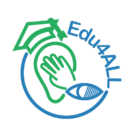قائمة المصطلحات
Disability: An umbrella term for impairments, activity limitations, and participation restrictions. Denotes the negative aspects of the interaction between an individual (with a health condition) and that individual’s environmental and personal context
Health condition: A disease that is short or long-lasting; an injury (e.g sustained in an accident); mental or emotional problems, which may range from stress due to day-to-day problems of living to more serious forms of mental illness; or problems with alcohol or drugs
Functioning: An umbrella term for body functions, body structures, activities and participation. Denotes the positive aspects of the interaction between an individual (with a health condition) and that individual’s environmental and personal context
Body Functions: Physiological functions of body systems (including psychological functions)
Body Structures: Anatomical parts of the body such as organs, limbs, and their components.
Impairments: Problems in body function and structure such as significant deviation or loss
Activity: The execution of a task or action by an individual
Participation: Is involvement in a life situation
Participation: Is involvement in a life situation
Activity limitations: Difficulties an individual may have in executing activities
Participation restrictions: Problems an individual may experience in involvement in life situations
Barriers or hindrances: External factors in a person’s environment that through their absence or presence, limit functioning and create disability. Includes aspects such as an inaccessible physical environment; lack of relevant assistive technology; negative attitudes of people towards disability and services, systems and policies that are lacking or that hinder the involvement of all people with a health condition in any area of life
Facilitators: Factors in a person’s environment that, through their absence or presence, improve functioning and reduce disability. Includes aspects such as an accessible physical environment; availability of relevant assistive technology; positive attitudes of people towards disability; and services systems, and policies that aim to increase the involvement of all people with a health condition in all areas of life. The absence of a factor can also be facilitating (e.g. the absence of stigma or negative attitudes). Facilitators can prevent an impairment or activity limitation from becoming a participation restriction, since the actual performance of an action is improved, despite the person’s problem with capacity
Contextual factors: The complete background to a person’s life and living including external environmental factors and internal personal factors
Environmental factors: Contextual factors that include the background of a person’s life and living, composed of components of the natural environment (weather or terrain); the human-made environment (tools, furnishing, the built environment); social attitudes, customs, rules, practices and institutions, and other individu
Personal factors: Contextual factors that include the background of a person’s life and living, composed of features that are not part of a health condition or disability. Includes age, race, gender, educational background experiences, personality and character style, aptitudes, other health conditions, fitness lifestyle, habits, upbringing, coping styles, social background, profession, and past and current experiences
Assistive Technology: any item, piece of equipment, or product system whether acquired commercially, modified, or customized, that is used to increase, maintain, or improve functional capabilities of individuals with disabilities. Examples of Assistive Technologies include wheelchairs prostheses, hearing aids, visual aids, and specialized computer software and hardware that increase mobility, hearing, vision, or communication capacities

